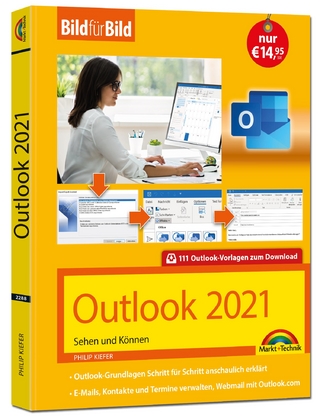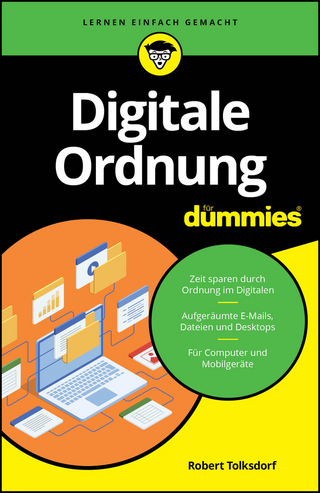
NoSQL Data Models
ISTE Ltd and John Wiley & Sons Inc (Verlag)
978-1-78630-364-6 (ISBN)
Olivier Pivert is currently a full Professor of Computer Science at the National School of Applied Sciences and Technology, Lannion, France; and a Member of the Institute for Research in Computer Science and Random Systems where he heads the Shaman research team.
Foreword xi
Anne LAURENT and Dominique LAURENT
Preface xiii
Olivier PIVERT
Chapter 1. NoSQL Languages and Systems 1
Kim NGUYỄN
1.1. Introduction 1
1.1.1. The rise of NoSQL systems and languages 1
1.1.2. Overview of NoSQL concepts 4
1.1.3. Current trends of French research in NoSQL languages 6
1.2. Join implementations on top of MapReduce 7
1.3. Models for NoSQL languages and systems 12
1.4. New challenges for database research 16
1.5. Bibliography 18
Chapter 2. Distributed SPARQL Query Processing: A Case Study with Apache Spark 21
Bernd AMANN, Olivier CURÉ and Hubert NAACKE
2.1. Introduction 21
2.2. RDF and SPARQL 22
2.2.1. RDF framework and data model 22
2.2.2. SPARQL query language 25
2.3. SPARQL query processing 29
2.3.1. SPARQL with and without RDF/S entailment 29
2.3.2. Query optimization 30
2.3.3. Triple store systems 33
2.4. SPARQL and MapReduce 34
2.4.1. MapReduce-based SPARQL processing 35
2.4.2. Related work 39
2.5. SPARQL on Apache Spark 41
2.5.1. Apache Spark 41
2.5.2. SPARQL on Spark 42
2.5.3. Experimental evaluation 48
2.6. Bibliography 53
Chapter 3. Doing Web Data: from Dataset Recommendation to Data Linking 57
Manel ACHICHI, Mohamed BEN ELLEFI, Zohra BELLAHSENE and Konstantin TODOROV
3.1. Introduction 57
3.1.1. The Semantic Web vision 57
3.1.2. Linked data life cycles 58
3.1.3. Chapter overview 61
3.2. Datasets recommendation for data linking 62
3.2.1. Process definition 63
3.2.2. Dataset recommendation for data linking based on a Semantic Web index 64
3.2.3. Dataset recommendation for data linking based on social networks 64
3.2.4. Dataset recommendation for data linking based on domain-specific keywords 65
3.2.5. Dataset recommendation for data linking based on topic modeling 65
3.2.6. Dataset recommendation for data linking based on topic profiles 66
3.2.7. Dataset recommendation for data linking based on intensional profiling 67
3.2.8. Discussion on dataset recommendation approaches 68
3.3. Challenges of linking data 69
3.3.1. Value dimension 70
3.3.2. Ontological dimension 74
3.3.3. Logical dimension 77
3.4. Techniques applied to the data linking process 78
3.4.1. Data linking techniques 79
3.4.2. Discussion 83
3.5. Conclusion 86
3.6. Bibliography 87
Chapter 4. Big Data Integration in Cloud Environments: Requirements, Solutions and Challenges 93
Rami SELLAMI and Bruno DEFUDE
4.1. Introduction 93
4.2. Big Data integration requirements in Cloud environments 96
4.3. Automatic data store selection and discovery 99
4.3.1. Introduction 99
4.3.2. Model-based approaches 99
4.3.3. Matching-oriented approaches 100
4.3.4. Comparison 102
4.4. Unique access for all data stores 103
4.4.1. Introduction 103
4.4.2. ODBAPI: A unified REST API for relational and NoSQL data stores 104
4.4.3. Other works 105
4.4.4. Comparison 107
4.5. Unified data model and query languages 108
4.5.1. Introduction 108
4.5.2. Data models of classical data integration approaches 109
4.5.3. A global schema to unify the view over relational and NoSQL data stores 110
4.5.4. Other works 113
4.5.5. Comparison 117
4.6. Query processing and optimization 118
4.6.1. Introduction 118
4.6.2. Federated query language approaches 118
4.6.3. Integrated query language approaches 121
4.6.4. Comparison 124
4.7. Summary and open issues 125
4.7.1. Summary 125
4.7.2. Open issues 127
4.8. Conclusion 129
4.9. Bibliography 129
Chapter 5. Querying RDF Data: A Multigraph-based Approach 135
Vijay INGALALLI, Dino IENCO and Pascal PONCELET
5.1. Introduction 135
5.2. Related work 137
5.3. Background and preliminaries 137
5.3.1. RDF data 138
5.3.2. SPARQL query 140
5.3.3. SPARQL querying by adopting multigraph homomorphism 142
5.4. AMBER: A SPARQL querying engine 143
5.5. Index construction 144
5.5.1. Attribute index 144
5.5.2. Vertex signature index 145
5.5.3. Vertex neighborhood index 148
5.6. Query matching procedure 149
5.6.1. Vertex-level processing 151
5.6.2. Processing satellite vertices 152
5.6.3. Arbitrary query processing 154
5.7. Experimental analysis 159
5.7.1. Experimental setup 159
5.7.2. Workload generation 160
5.7.3. Comparison with RDF engines 161
5.8. Conclusion 164
5.9. Acknowledgment 164
5.10. Bibliography 164
Chapter 6. Fuzzy Preference Queries to NoSQL Graph Databases 167
Arnaud CASTELLTORT, Anne LAURENT, Olivier PIVERT, Olfa SLAMA and Virginie THION
6.1. Introduction 167
6.2. Preliminary statements 168
6.2.1. Graph databases 168
6.2.2. Fuzzy set theory 174
6.3. Fuzzy preference queries over graph databases 176
6.3.1. Fuzzy preference queries over crisp graph databases 176
6.3.2. Fuzzy preference queries over fuzzy graph databases 182
6.4. Implementation challenges 193
6.4.1. Modeling fuzzy databases 193
6.4.2. Evaluation of queries with fuzzy preferences 193
6.4.3. Scalability 195
6.5. Related work 197
6.6. Conclusion and perspectives 198
6.7. Acknowledgment 199
6.8. Bibliography 199
Chapter 7. Relevant Filtering in a Distributed Content-based Publish/Subscribe System 203
Cédric DU MOUZA and Nicolas TRAVERS
7.1. Introduction 203
7.2. Related work: novelty and diversity filtering 205
7.3. A Publish/Subscribe data model 206
7.3.1. Data model 206
7.3.2. Weighting terms in textual data flows 207
7.4. Publish/Subscribe relevance 208
7.4.1. Items and histories 208
7.4.2. Novelty 209
7.4.3. Diversity 209
7.4.4. An overview of the filtering process 210
7.4.5. Choices of relevance 210
7.5. Real-time integration of novelty and diversity 212
7.5.1. Centralized implementation 212
7.5.2. Distributed filtering 216
7.6. TDV updates 221
7.6.1. TDV computation techniques 221
7.6.2. Incremental approach 223
7.6.3. TDV in a distributed environment 225
7.7. Experiments 228
7.7.1. Implementation and description of datasets 229
7.7.2. TDV updates 229
7.7.3. Filtering rate 230
7.7.4. Performance evaluation in the centralized environment 234
7.7.5. Performance evaluation in a distributed environment 238
7.7.6. Quality of filtering 240
7.8. Conclusion 241
7.9. Bibliography 242
List of Authors 245
Index 247
| Erscheinungsdatum | 02.10.2018 |
|---|---|
| Verlagsort | London |
| Sprache | englisch |
| Maße | 160 x 234 mm |
| Gewicht | 544 g |
| Themenwelt | Mathematik / Informatik ► Informatik ► Datenbanken |
| Informatik ► Office Programme ► Outlook | |
| ISBN-10 | 1-78630-364-7 / 1786303647 |
| ISBN-13 | 978-1-78630-364-6 / 9781786303646 |
| Zustand | Neuware |
| Informationen gemäß Produktsicherheitsverordnung (GPSR) | |
| Haben Sie eine Frage zum Produkt? |
aus dem Bereich


